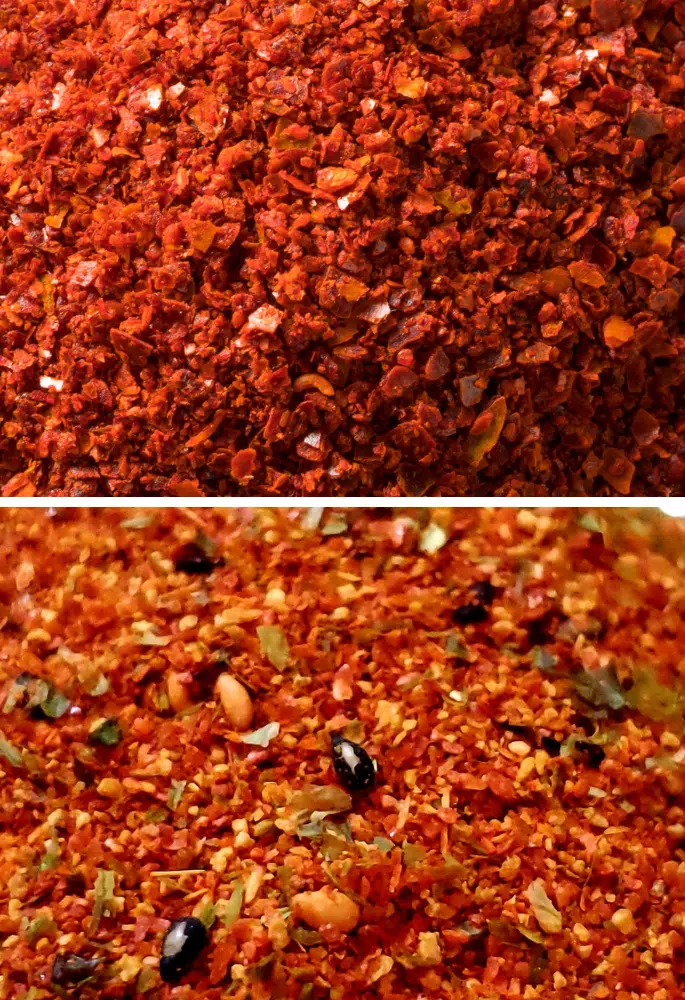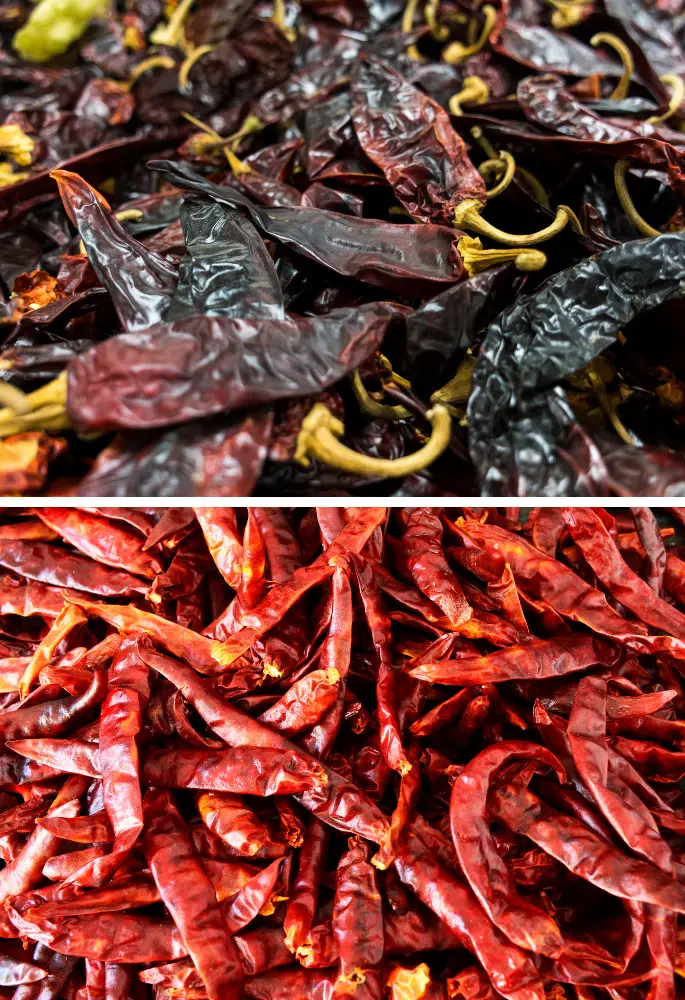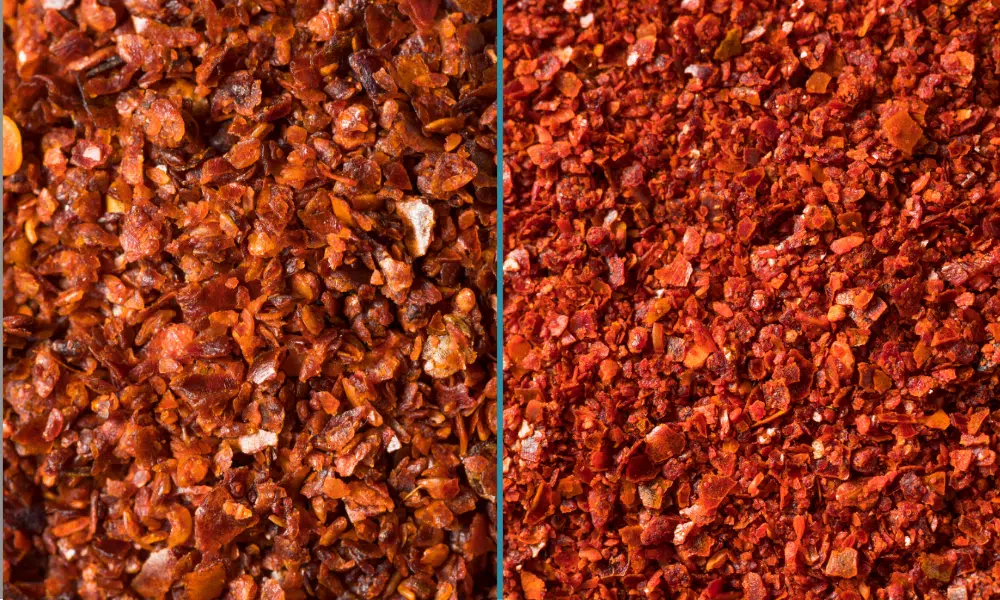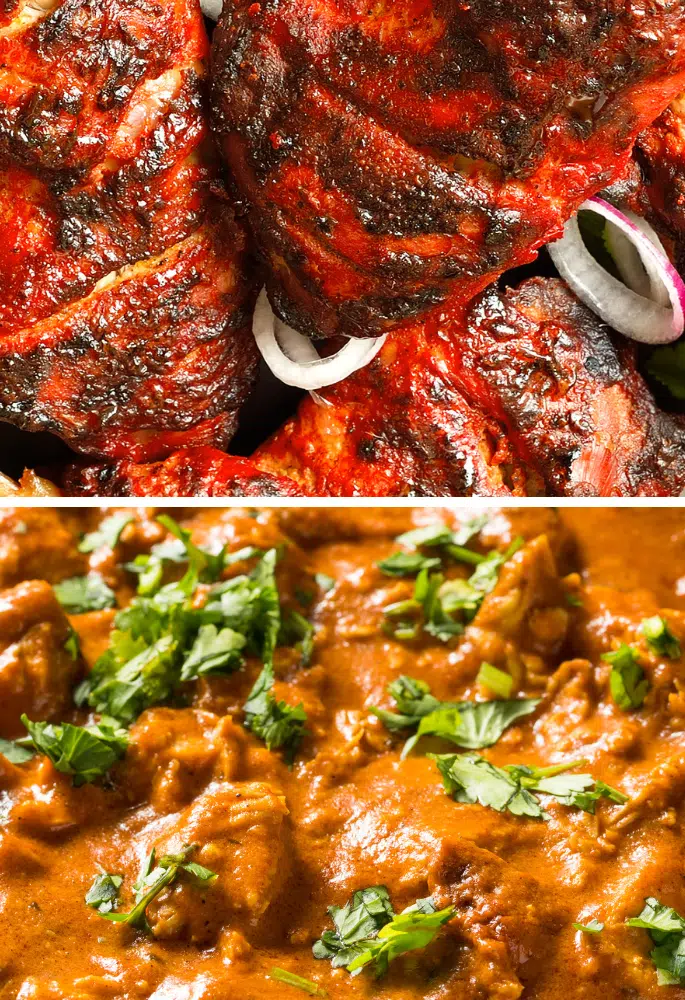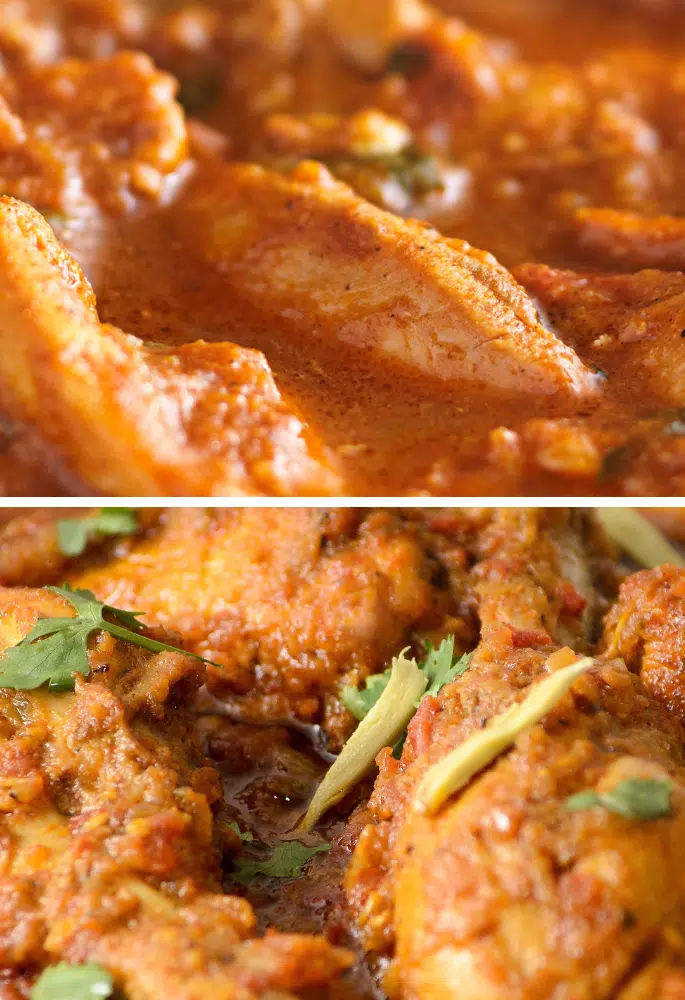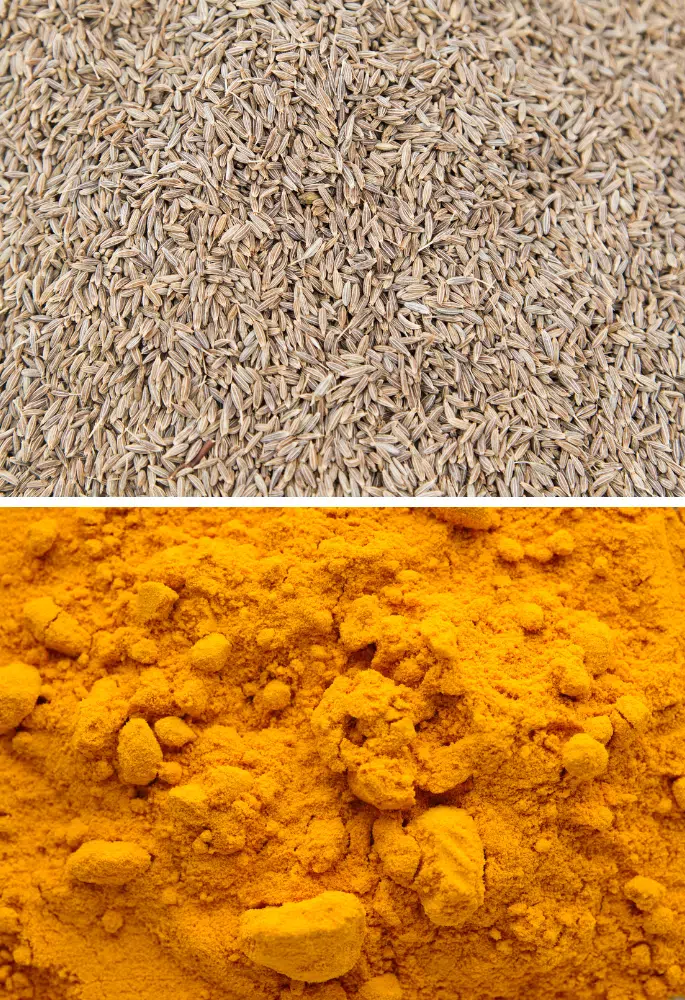Mexico is one of, if not the most, renowned countries for using an array of chilli peppers in their cuisine. There seems to be a chilli pepper for every occasion, from stuffed peppers to spicy fresh salsa.
Though there are countless chilli peppers to choose from, you will find chile negro and guajillo showing up at various points in Mexican cuisine. But just because they may be used together in multiple recipes does not mean they are the same ingredient.
When comparing chile negro and guajillo, their most noticeable difference is their heat. Guajillo can be as hot as 5000 on the Scoville scale, while Chile Negro can only reach up to 2500 SHU.
What is Chile Negro?
You have probably heard chile negro be more commonly referred to as the pasilla pepper, meaning little raisin.
However, they are not technically the same thing.
The pasilla pepper is the dried variation of chile negro (better known as the chilaca pepper). You can use fresh chile negro, though they are more commonly sold dried.
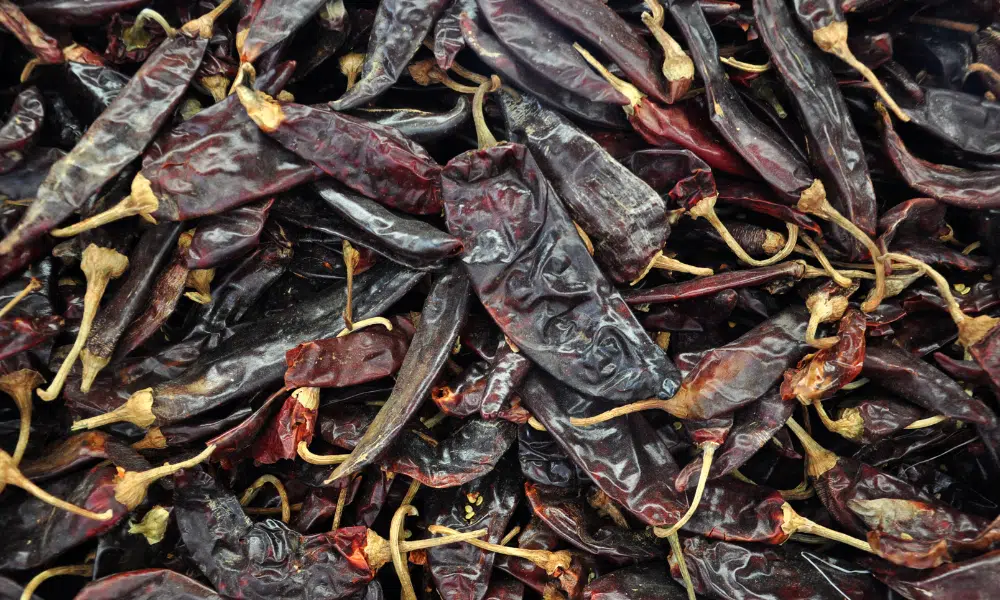
Translated, chile negro simply means black chilli, which is indicative of its dark green, almost black skin that only gets darker when the chile is dried.
As chile negro matures, it develops a rich flavour that is used to add more body to sauce or to add fresh spice to quick salsas.
There will be noticeable heat when you cook with chile negro as it can score up to 2,500 on the Scoville heat scale. But compared to other chile peppers like jalapeno, it is up to 5 times milder.
Chile negro is mainly sold dried as pasilla peppers to better preserve the taste of the chile negro for longer and make its richness more impactful. As such, you will have difficulty finding fresh chile negro outside of specialised Mexican stores or online stores.
What is Guajillo?
As far as staple ingredients go, guajillo is one of Mexico’s most beloved and widely used chillies. They are used in pretty much any way you can think of, from meat rubs to traditional mole sauces.
Guajillo’s flavour is dominant as it is a dried chilli pepper made from the mirasol pepper. Despite scoring an average of between 2,500 and 5,000 on the Scoville scale, guajillo is not all heat and spice.
It is also a sweet chilli that some people say resembles berries. The sweetness is subtle, so you will not have to worry about it altering the taste of your dish too drastically, but it does offer a nice reprieve from the heat.
Of course, because it is a dried chilli, guajillo has a slight smokiness that helps build a savoury base for your dish. This smokiness is amplified when the guajillo is cooked.
Because guajillo is simply dried mirasol peppers, you can use them in place of each other. However, mirasol peppers will not have as impactful heat or flavour as guajillo and will lack the smoky taste.
Similarities Between Chile Negro and Guajillo
Even those familiar with Mexican cuisine may get confused when trying to separate chile negro and guajillo because of their similarities, such as:
Mexico’s Holy Trinity
Every cuisine has its own staple ingredients on which its cuisine is built, often referred to as the holy trinity. Mexican cuisine uses chilli peppers so frequently that they have both a vegetable and chilli pepper holy trinity.
Chile negro and guajillo comprise two-thirds of that trinity, often being used together or in place of each other.
Uses
Considering that chile negro and guajillo are so popular in Mexican cuisine, they are often used in many of the same situations.
Both chilli peppers are commonly used in a wide range of sauces, from enchilada sauce to mole sauces. However, they can also be used to spice up salsas and soups.
Spicy Sweet Taste
The main appeal of chile negro and guajillo is their heat, like most chillies.
That being said, both chillies peppers have a subtle sweetness that can add some flavour balance to your dish without overwhelming the dish with sweetness.
Differences Between Chile Negro and Guajillo
Despite being Mexican staples and being part of the same food family, chile negro and guajillo have some core differences that you will have to consider before you try to use them interchangeably:
Heat Score
One of the most defining characteristics of a chilli is its hotness, which is usually decided based on the Scoville heat scale and measured in SHU.
In the case of chile negro and guajillo, guajillo’s maximum average heat is double that of chile negro at 5,000 SHU compared to 2,500 SHU, making it significantly hotter.
Fresh vs Dried
Though chile negro is most often sold in a dried form (as pasilla peppers), it is a fresh chilli. This makes its preparation and flavour profile even more different from guajillo, which is the dried variation of the mirasol pepper.
Preparation
Because guajillos are dried chillies, they may need to be rehydrated first to be used in your dish, especially if you are making fresh salsa or want to use the chillies as a finishing touch in your food.
Preparing chile negro is just like preparing any other fresh pepper and requires less effort to prep.
Sweet-Specific Taste
Everyone’s interpretation of taste varies slightly, but for the most part, people can agree that the sweetness present in chile negro and guajillo are noticeably different.
Chile negro’s sweetness is closer to cocoa or raisins, whereas guajillo is often compared to fresh berries.
Shelf Life
One of the key disadvantages of using fresh produce like chile negro is that their shelf life is significantly shorter than their dried counterparts.
That is why many people prefer to use guajillo as its dried form makes it last longer in your pantry, meaning less food waste.
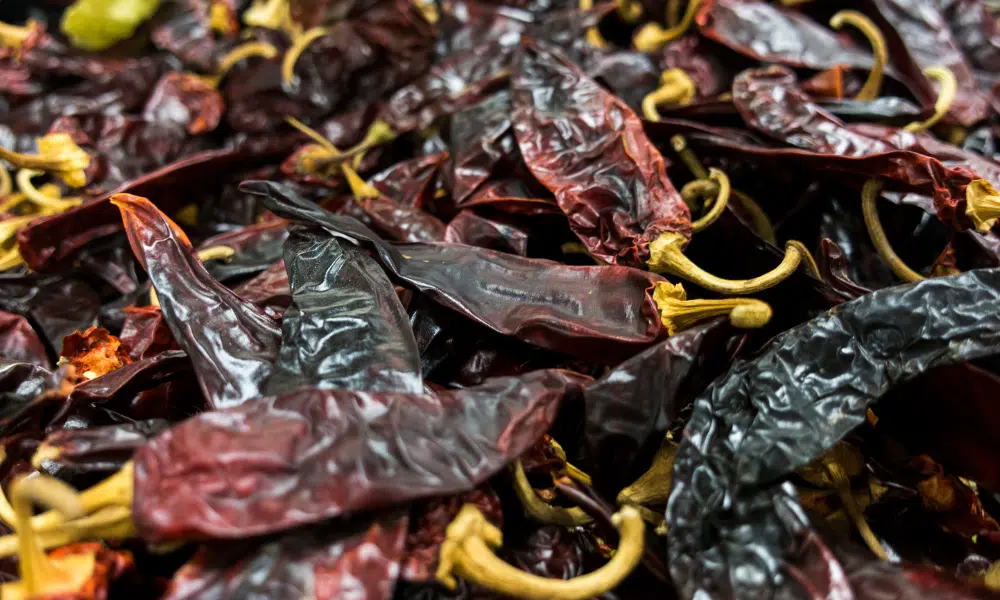
Chile Negro vs Guajillo: Which Wins?
You’ve got to pick just one type of chilli to use whenever you cook any Mexican dishes… Which are you voting for? It’s chile negro vs guajillo but which comes out on top?
Do You Prefer Chile Negro or Guajillo?
Chile Negro and Guajillo FAQs
Do you still have questions about these two popular Mexican chillies and how they differ? Then check these out:
No, they are not the same. Ancho chilli is generally made from dried poblano peppers, whereas chile negro is the fresh version of dried pasilla chillies.
Sources
Where we obtain our information and verify the facts in this article:
Chilli Pepper Madness
The Scoville scale and where different chillies score
Benitos Mexican
The chilli Holy Trinity of Mexican cuisine
Acacia may be a freelance writer by day, but they are a food fanatic by night. They are always trying out new recipes or finding different ways to elevate classical dishes. But their biggest culinary aim is to educate others on the basics of the kitchen so that they too can enjoy delicious food.


